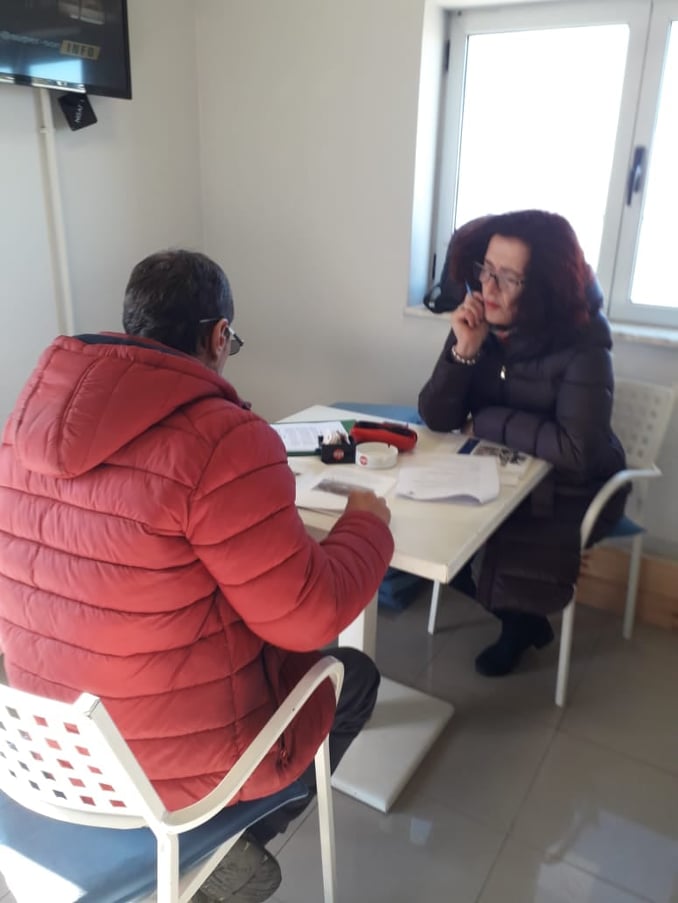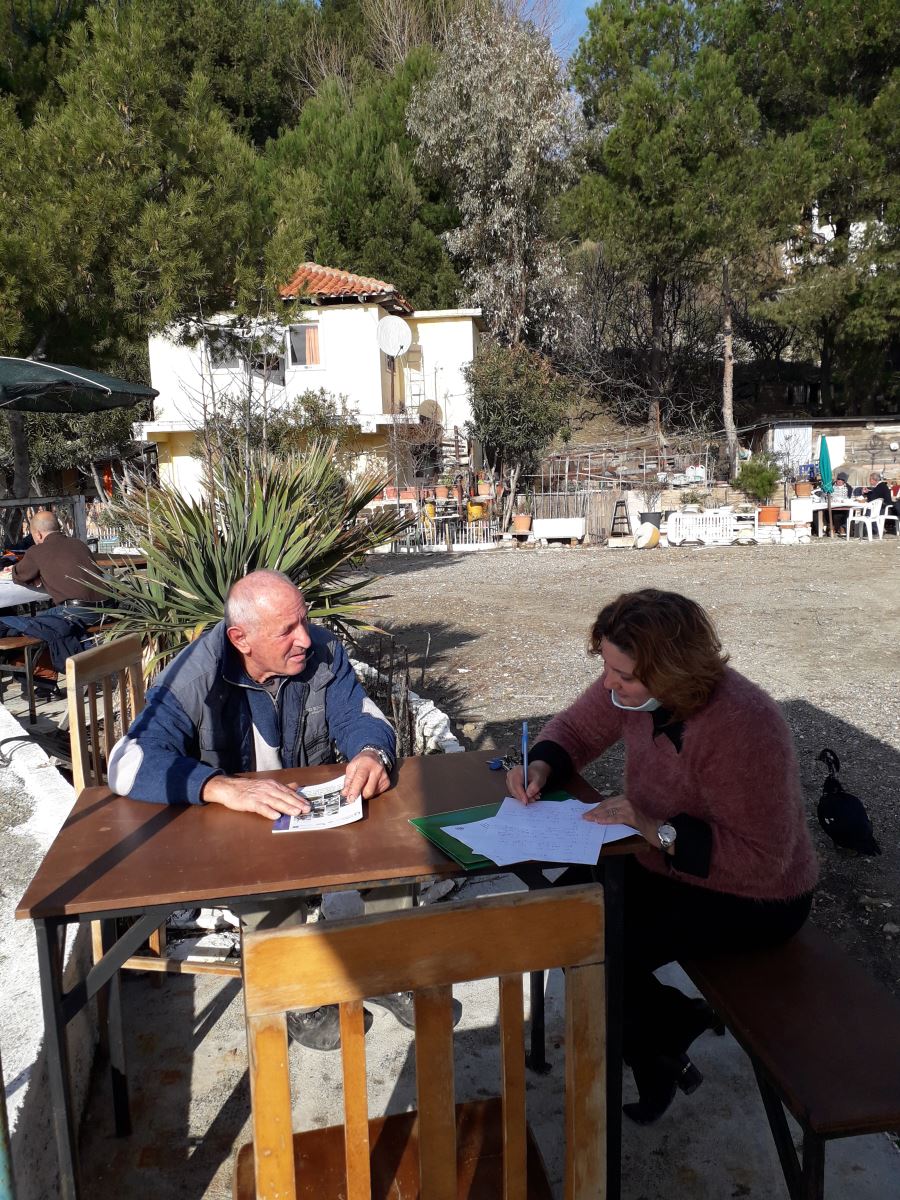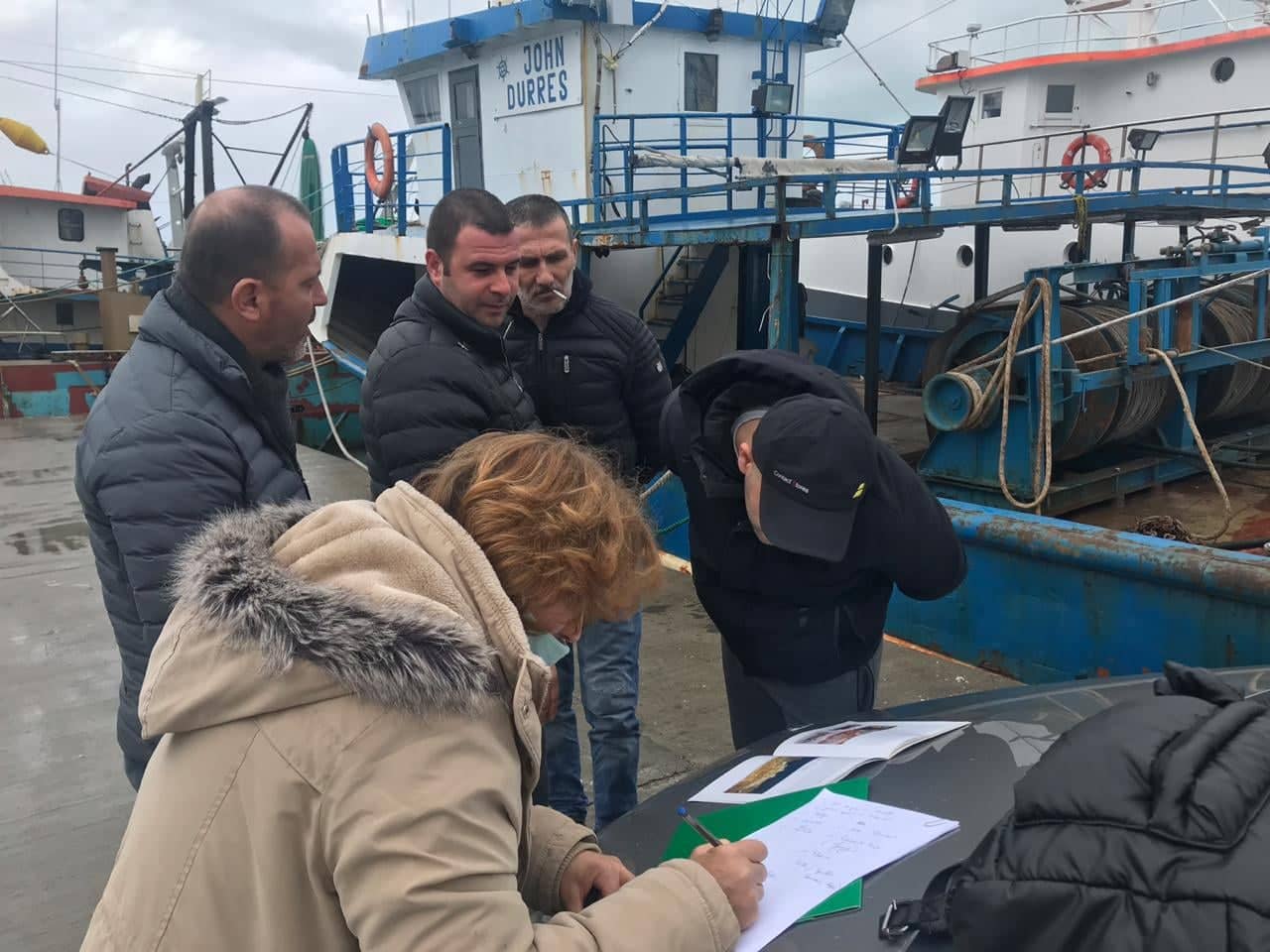Summary of results
The assumption of the WP2 was to build a robust background of all the available information and data on aquatic NNS in the targeted WBs countries.
This was attempts by the following activities carried on during the WP2:
-
a literature review and survey to collect all available data on aquatic NNS in WBs;
-
a series of interview with fisheries and aquaculture industries representatives to and collect new information on aquatic NNS in WBs and assess their perception about NNS;
-
creation of an online platform (in English and WBs languages) available to citizen and other stakeholders to collect new records and information about aquatic NNS in the WBs and its launch through a pilot test in one of the WBs Partner Countries;
-
creation of a database reporting the updated lists of aquatic NNS in the three WBs Partner Countries.
1) SHORT SUMMARY OF LITERATURE REVIEW
.jpg) Balkan Peninsula is one of the world biodiversity hotspots and it possesses the highest proportion of range-restricted endemic fish species in Europe. However, recent surveys from several Balkan countries have revealed that 15%-23% of their freshwater fish fauna is NN, with catchments, such as the Danube River and Pamvotis Lake (Greece) hosting a fish fauna comprising more than 50% and 80% of NNS, respectively. Until the early 1950s, NNS introductions were primarily of North American and Asian origin, while the interest for the species from Northern and Western Europe arose later. In total, 60 fish species have been introduced in the Balkan Peninsula intentionally, accidentally, or by natural dispersal. The inclusion of NNS descriptors and indicators in policy instruments has created reporting obligations at national level (e.g., see Tsiamis et al., 2019) and triggered a surge of scientific activity focused on the detection, quantification, exploration, and mitigation of their impacts. Also, Citizen Science (i.e., the involvement of the public in the production of scientific data – McKinley et al., 2017) has emerged as a powerful contributor to the early detection of new NN species.
Balkan Peninsula is one of the world biodiversity hotspots and it possesses the highest proportion of range-restricted endemic fish species in Europe. However, recent surveys from several Balkan countries have revealed that 15%-23% of their freshwater fish fauna is NN, with catchments, such as the Danube River and Pamvotis Lake (Greece) hosting a fish fauna comprising more than 50% and 80% of NNS, respectively. Until the early 1950s, NNS introductions were primarily of North American and Asian origin, while the interest for the species from Northern and Western Europe arose later. In total, 60 fish species have been introduced in the Balkan Peninsula intentionally, accidentally, or by natural dispersal. The inclusion of NNS descriptors and indicators in policy instruments has created reporting obligations at national level (e.g., see Tsiamis et al., 2019) and triggered a surge of scientific activity focused on the detection, quantification, exploration, and mitigation of their impacts. Also, Citizen Science (i.e., the involvement of the public in the production of scientific data – McKinley et al., 2017) has emerged as a powerful contributor to the early detection of new NN species.
Albania has a high level of biological diversity at the landscape, ecosystem, and species levels, especially concerning its small land area. This diversity is the result of the wide range in climate, altitude, and geology in Albania; its location at the intersection of two major biogeographic zones (Central Europe and the Mediterranean); its location astride an important bird migration route; its coastline on the Adriatic and Ionian seas; and an abundance of ecologically diverse freshwater ecosystems. Albania is ecologically linked to neighbouring countries through shared ecosystems, habitats, lakes, and rivers as well as migrations of birds and marine organisms. So far, there are 20 registered marine invasive NNS. They represent different taxonomy classification such as: Rhodophyta (4 species), Chlorophyta (1 species), Phaeophyta (1 species), Spermatophyta (1 species), Annelida (1 species), Decapods (3 species), Molluscs (5 species), and Pisces (4 species). Different methodologies were used for the identifications of the NN species in Albania. Some of the identifications were made by direct sampling of the NN individuals by the researchers. In other cases, the collection of the samples was done by the fishers and the identification and description of the species from the scientists later on or through citizen science projects, such as “Is it Alien to you? Share it!!!” and “Local Ecological Knowledge - LEK”.
Visit the database here.
Bosnia and Herzegovina (BIH) is a geo-morphologically, hydrologically and climatically very diverse country, which has resulted in pronounced ecological heterogeneity. Published reports include almost 5,100 identified taxa of higher plants, which underlines its floristic richness and places the country among the richest ones in biodiversity in Europe. This is also confirmed by a great deal of endemic and relict species, especially among the invertebrates. BiH's fauna is characterized by the occurrence of refugia and development centers, and by the most unique fauna of karst sources, mountain torrents, and canyons. Fish fauna in BIH is relatively well investigated. There are 119 freshwater fish species in total. The highest diversity is recognized within the family Cyprinidae (26 genera and 51 species) and Salmonidae (5 genera and 8 species). During floristic research of the area along the lower course of the Una River in the spring of 2009, 14 NN invasive species were recorded, which mainly spread because traditional agricultural practices had been abandoned. BiH possesses only a 27 km-long shoreline at the Adriatic Sea. However, the field of marine science is, in general, still underdeveloped and underutilized in the country.
Visit the database here.
Montenegro is characterized by high genetic, species, and ecosystem biodiversity. The main characteristic of the biodiversity of Montenegro is the high concentration of different species and ecosystems in a limited area. Specific investigations and monitoring of NN species in Montenegro have not been conducted. Present records of NN species originated from various projects and monitoring programs, including national and international surveys. In recent years, the application of LEK was conducted in the framework of international projects which allowed to set transnational collaborations among researchers of Adriatic countries. These projects have recorded the presence of six species of macroalgae, one species of sponges, 11 species of molluscs, three species of arthropods, two worms, one bryozoan, one ascidia, and 12 new fish species. Regarding freshwater ecosystems, a compilation of bibliographical records of introduced fish species is presented in Piria et al. (2018), where 16 fish species have been identified in the Montenegrin region as NNS in this country.
Visit the database here.
2) RESULTS OF THE INTERVIEWS WITH FISHERY AND AQUACULTURE INDUSTRIES REPRESENTATIVES
Interview with fisheries and aquaculture industry representatives were accomplished to collect more detailed information about the current status of NNS in WBs. Sample surveys and interviews were used. A dedicated questionnaire was prepared by the RiskMan Consortium in English and then translated in the three Partners Countries languages to be compiled by the stakeholders.



In Albania, the questionnaire surveys were conducted by AUT and ACEPSD assisted by ALB-ADRIATICO 2013. As a summary of the results, the freshwater aquaculture farms representatives showed to have a higher education level in comparison to the representatives of the marine aquaculture farms. The detailed results of the interviews are available here. As a summary, it was noted that the level of knowledge about the NNS increased with the level of education of the interviewed. To give some example, representatives from the marine aquaculture farms declared that Gilthead seabream and European seabass were NNS in the country. However, all the representatives of the freshwater aquaculture farms didn’t prefer to answer the question “Would you be available to collaborate?”, while most of the representatives of marine aquaculture sub-sector expressed their availability to collaborate in the future with scientists about the NNS related issues. In the fisheries sub-sectors, most of the interviewed fishers from the Vlore region were included in the age category of 36-49 years old and no older fishers were interviewed during the questionnaire surveys in Vlore. The education level profiles of Shengjin-Lac and Vlore were similar between them. It was also interesting to note that differently from the other investigated regions, all the fishers from Shengjin-Lac answered positively to the question “Do you know what a NNS is?”. Furthermore, all the fishers from Shengjin-Lac agree with the statement that NN species must be completely eliminated from the territory when possible, which probably indicates that these species are becoming more problematic in this region in comparison to the other two investigated regions, which show similar profiles regarding the answer to this question. However, it is important to note that most of the interviewed fishers (according to the answers) showed to be available in the future collaboration with the scientists, who conducted the questionnaire surveys.
In Bosnia and Herzegovina, the questionnaire surveys were conducted by researchers from UNBIH and UNISA. Although there is one marine fish farm in Bosnia and Herzegovina (B&H) located in the bay of Neum, due to pandemic circumstances at the time of the survey it was not possible to interview its employees. Therefore, all the results of the interview in B&H are available here and regard the sector of freshwater aquaculture in B&H. Summarizing, according to the filled questionnaires, in the aquaculture sector in Bosnia and Herzegovina employs predominantly male workers, mainly under 50 years of age. Higher levels of education of interviewed employees is reflected in their knowledge about what a NNS is. Although interviewees agree that NNS pose a threat to the native biodiversity and must be controlled, they differ in the opinion on how to best prevent or reduce the damage caused by the introduction of NNS into the wild. It is alarming that they all are not willing to stop breeding NNS even though they are aware of a potential risk of fish escaping their farms and inhabiting surrounding natural habitats. Furthermore, they are completely unwilling to collaborate with the researchers or scientists. As for the aquaculture sector, only candidates engaged in freshwater professional and recreational fisheries participated in the survey. Regarding the gender composition, males again are mostly involved in fisheries. Only two females participated in the survey. Higher level of education of interviewed fishers is reflected in their knowledge about what a NNS is. Only a small percentage of interviewed recreational fishers answered that they have a vague perception or no knowledge of the definition of NNS. Nevertheless, general agreement that NNS do pose a certain problem in various aspects, it is evident that further education on the prospect consequences of the release of NNS is highly needed as a number of interviewed persons declared to have no knowledge about this issue. Most of the interviewed candidates agree that the authorities must intervene to control NNS coming from abroad by controlling the number of individuals in the environment as well as by removing all individuals from that environment. However, it is alarming that this interviewed group as well is not willing to stop breeding NNS if that would reduce the risk of damage to the environment, the economy and human health. None of the interviewed professional fishers are willing to collaborate with researchers or scientists. Recreational fishers, however, are much more opened to collaborations as well as people of occupations other than fisheries. Overall results showed that activities on raising awareness and information dissemination about the fish NNS are urgently needed in both aquaculture and fisheries sectors in Bosnia and Herzegovina.
In Montenegro, the questionnaire surveys were conducted by members of UoM. The aquaculture sector in Montenegro consists of both freshwater and marine aquacultures. Marine aquaculture is located only inside the Boka Kotorska Bay (fish and shellfish farming), while freshwater aquaculture is located among numerous rivers in Montenegro. The questionnaire surveys were conducted with representatives of marine aquaculture in Boka Kotorska Bay, and with representatives of freshwater aquaculture located in northern part of Montenegro (municipalities Plužine, Pljevlja, Berane, Bijelo Polje, Šavnik). For the fishery sector, professional marine fishers were interviewed in main ports of Montenegro (Herceg Novi, Kotor, Budva, Bar and Ulcinj), while sport and recreational fishers were interviewed in the area of Platamuni (area between Budva and entrance to the Boka Kotorska Bay). Interviewed freshwater fishers are located at Skadar Lake and city of Pljevlja (Northern Montenegro). The detailed results of the interviews in Montenegro are available here. According to the filled questionnaires, regarding the gender composition, in Montenegro males are mainly engaged in the aquaculture sector (both freshwater and marine). Most of the interviewed candidates know what a NNS is, but there are some who do not know or partly know. Both candidates from the freshwater and marine aquaculture sector completely agree that some NNS, particularly harmful to the environment, must be completely eliminated from the territory when possible. As citizens, they all are willing to stop breeding NNS if that would reduce the risk of damage to the environment, the economy and human health. Most of the marine aquaculture candidates answered that they would be able to collaborate with the researchers or scientists but a lot of them are also suspicious that they are going to lose their job because of it. Many candidates from the freshwater aquaculture sector agree with them. In the fisheries sector, candidates engaged in marine professional and sport and recreational fisheries as well as in freshwater fisheries participated in the survey. Regarding the gender composition, males are mostly involved in all types of fisheries. Only one female participated in the survey. It is interesting to note that fishers know or partly know what the NNS is, while a very small number of them do not know. All interviewed candidates completely agree that some NN species, particularly harmful to the environment, must be completely eliminated from the territory when possible. Only a few of them do not know the answer. Most of the interviewed candidates agree that the authorities must intervene to control NNS coming from abroad by controlling the number of individuals in the environment as well as by removing all individuals from that environment. As citizens, almost all of the interviewed fishers are willing to stop breeding NNS if that would reduce the risk of damage to the environment, the economy and human health. They all are available to collaborate with the scientists in the future.
3) RISKMAN ONLINE PLATFORM FOR DETECTION OF NEW AQUATIC NNS RECORDS IN THE WBS
The results obtained from the literature review and the interview were used to build an online platform aiming to collect new detection records on aquatic NNS occurrences on WBs Partner Countries through the involvement of stakeholders and citizens. This platform is one of the outcomes of the RiskMan Project and it is open to the public participation (Citizen Science) being hosted on Google Drive to be Open Access (access given through identification by email). The platform collect all the results of a detailed questionnaire created by the RiskMan team and containing all the details useful to the users to share their new records or knowledge on the presence of NNS in the aquatic ecosystems of Western Balkans Countries. The Questionnaires are available in English and the three languages of the Partner WBs Countries (Albanian, Bosnian, and Montenegrin) and also on the languages of the surrounding countries (Croatian and Macedonian).
Visit the platform here.
A pilot test was carried out in Albania and the results are available here. Moreover further responses were obtained from Bosnia & Herzegovina and Montenegro. Most of the people answered that they are very likely to share the form with friends or co-workers. In general, the results report a positive response of the participants to use the platform to share information about NNS in the WBs countries. At November 2022 a total of 46 responses from 4 different countries and for 13 different marine and freshwater NNS were recorded on the platform. This let positively expected to the wider participation also after the end of the RiskMan Project. It is interesting to note that most of the observations correspond to the presence of Atlantic blue crab (Callinectes sapidus) followed by gibel carp (Carassius gibelio).
.jpg)